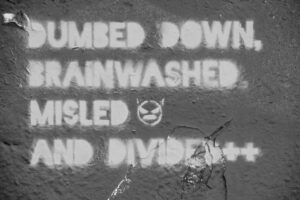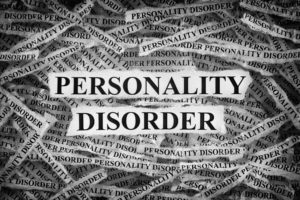
It’s normal to feel down once in a while, but if you’re sad most of the time, it’s a problem. It can affect your daily life, and you may even have clinical depression. It’s a condition you can treat with medicine, talking to a therapist, and making changes to your overall lifestyle. There are unfortunately many different types of depression, all of which are listed here. Events in your life can cause some, and chemical changes in your brain cause others. Whatever the cause, your first step is to let your doctor know how you’re feeling. They may refer you to a mental health specialist to help figure out the type of depression you have. This diagnosis is important in deciding the right treatment for you. These are the 10 different kinds of depression.
10 Different Kinds of Depression
1. Major Depressive Disorder
Major depressive disorder (MDD), also known simply as depression, is a mental and mood disorder. It is characterized by at least two weeks of pervasive low mood, low self-esteem, and loss of interest or pleasure in normally enjoyable activities. Other symptoms include anxious distress, melancholy, extreme agitation, and physical and mental pain without a clear cause. People dealing with MDD will often fluctuate in weight, feel fatigued, become easily bored, and lack focus. A loss of sleep is also fairly common, and if they do sleep, they will sleep for much longer than usual. Insomnia or hypersomnia, indecisiveness, guilt, and remorse are also very common symptoms.
—
A general loss of interest is key, as what many would consider laziness is a common feature. Risk factors include a family history of the condition, major life changes, certain medications, chronic health problems, and substance use disorders. There are no clinical tests to guarantee anyone has this disorder; however, tests can be taken to see if it is a physiological problem instead. Antidepressants and therapy are general what help people through depression. It’s always recommended to get talk-help if possible, but taking medications, especially antipsychotics, should be last resort.
2. Bipolar Depression
Bipolar disorder, previously known as manic depression, is a mood disorder characterized by periods of depression and periods of abnormally-elevated mood. These episodes last days, weeks, or even months each. If the elevated mood is severe or associated with psychosis, it is called mania; if it is less severe, it is called hypomania. These fluctuations can lead to erratic behavior, especially during the manic phase. Those in mania can become reckless and indulge in hedonistic desires like indiscriminate sex and reckless driving. Substance abuse is also common among those struggling with bipolar disorder, as it offers an escape from the psychotic and depressive symptoms.
—
When you’re in the low phase, you’ll have the symptoms of major depression, i.e., low mood, etc. Medication can help bring your mood swings under control. Whether you’re in a high or a low period, your doctor may suggest a mood stabilizer, such as lithium. Other medications include Abilify, Geodon, Seroquel, Latuda, and Olanzapine-fluoxetine. Off-label drugs are also used, along with antidepressant and antipsychotic medications. The most common medications are typically mood stabilizers, which are often paired with antidepressants; however, the real drugs have been said to work no better than placebos. If anything, more medications may lead to more frequent episodes later on down the line.
10 Different Kinds of Depression
3. Psychotic Depression
Psychotic depression, also known as depressive psychosis, is a major depressive episode that is accompanied by psychotic symptoms. It can occur in the context of bipolar disorder or major depressive disorder. It can be difficult to distinguish from schizoaffective disorder. This is because a diagnosis that requires the presence of psychotic symptoms for at least two weeks without any mood symptoms present.
—
Unipolar psychotic depression requires that the psychotic features occur only during episodes of major depression. A combination of antidepressant and antipsychotic drugs can treat psychotic depression. Electroconvulsive therapy (ECT) may also be an option in extreme cases.
4. Postpartum Depression
Postpartum depression (PPD), also called postnatal depression, is a type of mood disorder associated with childbirth, which can affect both sexes. Symptoms may include extreme sadness, low energy, anxiety, crying episodes, irritability, and changes in sleeping or eating patterns. Onset is typically between one week and one month following childbirth. PPD can also negatively affect the newborn child.
—
Women who have mild major depression in the weeks and months after childbirth may have peripartum depression. Approximately 1 in 10 men also experience depression in the peripartum period. Antidepressant drugs can help similarly to treating major depression that is unrelated to childbirth. This depression is typically not as severe as other forms of depression, but it can still cause interpersonal problems in reaction to change.
10 Different Kinds of Depression
5. Situational Depression
Adjustment disorder (AjD), or situational depression, is a mental and behavioral disorder, which is a maladaptive response to a psychosocial stressor. This reaction occurs when an individual has significant difficulty adjusting to or coping with a stressful psychosocial event. The maladaptive response usually involves otherwise normal emotional and behavioral reactions; however, they manifest more intensely than usual (taking into account contextual and cultural factors).
—
This ends up causing marked distress, preoccupation with the stressor and its consequences, and functional impairment. Diagnosis of adjustment disorder is quite common; there is an estimated incidence of 5–21% among psychiatric consultation services for adults. Adult women are diagnosed twice as often as are adult men. Among children and adolescents, girls and boys are equally likely to receive this diagnosis.
6. Atypical Depression
Atypical depression is depression that shares many of the typical symptoms of the psychiatric syndromes of major depression or dysthymia; however, it is characterized by improved mood in response to positive events. In contrast to atypical depression, people with melancholic depression are different. Those with typical depression generally do not experience an improved mood in response to normally pleasurable events.
—
Atypical depression also features significant weight gain or an increased appetite, hypersomnia, a heavy sensation in the limbs, and interpersonal rejection sensitivity that results in significant social or occupational impairment. Antidepressants can help, but they are generally recommended to be avoided. Your doctor may suggest a type called an SSRI (selective serotonin reuptake inhibitor) as the first-line treatment. They may also sometimes recommend an older type of antidepressant called an MAOI (monoamine oxidase inhibitor). MAOI is a class of antidepressants that has been well-studied in treating atypical depression.
10 Different Kinds of Depression
7. Persistent Depressive Disorder
Dysthymia, also known as persistent depressive disorder (PDD), is a mental and behavioral disorder, specifically a disorder primarily of mood. It consists of the same cognitive and physical problems as depression, but with longer-lasting symptoms. Dysthymia is a serious state of chronic depression, which persists for at least two years (one year for children and adolescents).
—
Dysthymia is less acute than major depressive disorder, but not necessarily less severe. As dysthymia is a chronic disorder, sufferers may experience symptoms for many years before it is diagnosed, if diagnosis occurs at all. As a result, they may believe that depression is a part of their character, so they may not even discuss their symptoms with doctors, family members or friends.
8. Seasonal Affective Disorder
Seasonal affective disorder (SAD) is a mood disorder subset in which people who have normal mental health throughout most of the year exhibit depressive symptoms at the same time each year, most commonly in winter. Common symptoms include sleeping too much, having little to no energy, and overeating. The condition in the summer can include heightened anxiety.
—
In the DSM-IV and DSM-5, its status was changed. It is no longer classified as a unique mood disorder; however, it is now a specifier. It is called “with seasonal pattern”, for recurrent major depressive disorder that occurs at a specific time of the year and fully remits otherwise. Although experts were initially skeptical, this condition is now recognized as a common disorder.
10 Different Kinds of Depression
9. Treatment Resistant Depression
Treatment-resistant depression (TRD) is a term used in clinical psychiatry to describe a condition that affects people with major depressive disorder (MDD) who do not respond adequately to a course of appropriate antidepressant medication within a certain time. Typical definitions of TRD vary, and they do not include a resistance to psychological therapies. Inadequate response has traditionally been defined as no clinical response whatsoever (e.g. no improvement in depressive symptoms). However, many clinicians consider a response inadequate if the person does not achieve full remission of symptoms.
—
People with treatment-resistant depression who do not adequately respond to antidepressant treatment are sometimes referred to as pseudo-resistant. Some factors that contribute to inadequate treatment are: early discontinuation of treatment, insufficient dosage of medication, patient noncompliance, misdiagnosis, and concurrent psychiatric disorders. if you’re diagnosed with treatment resistant depression, your doctor might recommend some less conventional treatment options. Electroconvulsive therapy (ECT) is sometimes helpful in this situation.
10. Premenstrual Dysphoric Disorder
Premenstrual dysphoric disorder (PMDD) is a severe and disabling form of premenstrual syndrome affecting 1.8-5.8% of menstruating women. The disorder consists of a variety of affective, behavioral and somatic symptoms. These symptoms recur monthly during the luteal phase of the menstrual cycle. Besides feeling depressed, you may also have: mood swings, irritability, anxiety, trouble concentrating, and fatigue. There are also change in appetite or sleep habits, and feelings of being overwhelmed.
—
PMDD affects women from their early teens up until menopause; however, this is excluding those with hypothalamic amenorrhea or during pregnancy and breastfeeding. Those with PMDD are at an increased risk of suicidal ideation, suicide attempt, and having a suicide plan. Antidepressant medication and sometimes oral contraceptives can treat PMDD.





Recent Comments